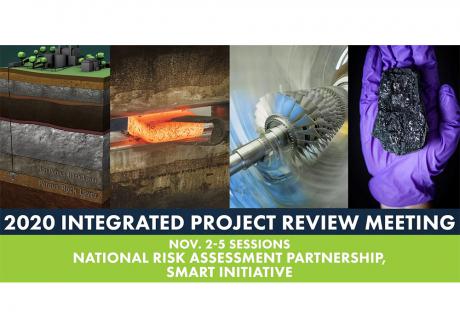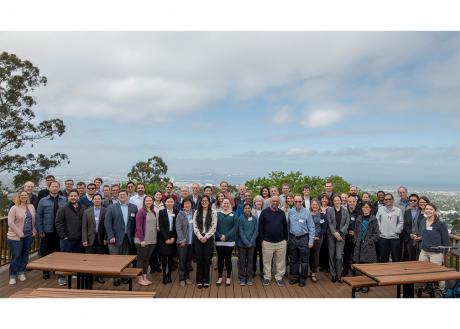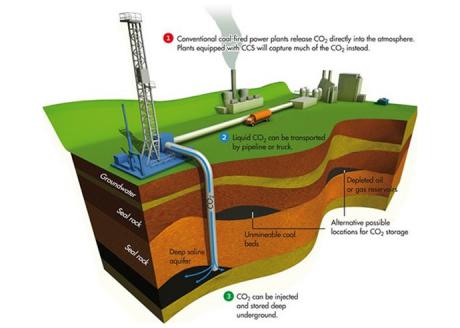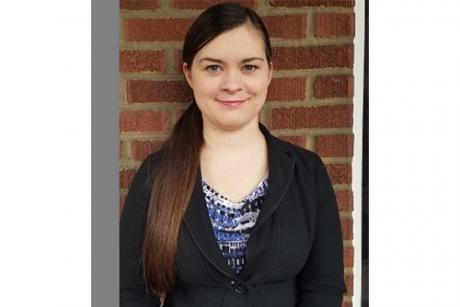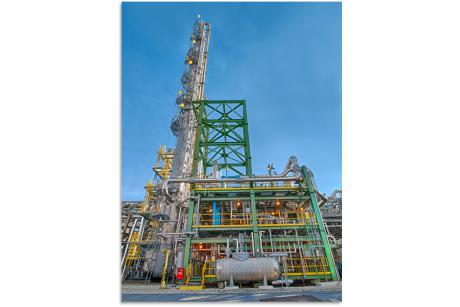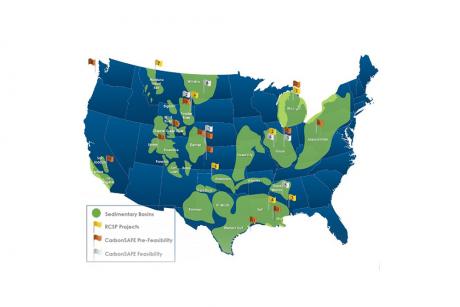Today, the U.S. Department of Energy's (DOE) Office of Fossil Energy (FE) announced plans to make $4 million in federal funding available for cost-shared research and development of tools and methods to optimize safe, secure, and verifiable carbon dioxide (CO2) storage.
The final week of the 2020 Virtual Integrated Project Review Meeting, hosted by the U.S. Department of Energy (DOE) and NETL, will explore the accomplishments and upcoming work to be undertaken by two NETL-led programs — the National Risk Assessment Partnership (NRAP) and the Science-informed Machine Learning for Accelerating Real-Time Decisions in Subsurface Applications (SMART) Initiative.
Today, the U.S. Department of Energy’s (DOE) Office of Fossil Energy, in collaboration with the Office of Energy Efficiency and Renewable Energy, the Office of Science and NETL announced a request for information (RFI) about “enhanced weathering” research opportunities that could lead to advances in the capture and storage of carbon dioxide (CO2).
Over the last 10 years, the NETL-led National Risk Assessment Partnership (NRAP) has built industrial confidence and worked to accelerate the commercial deployment of large-scale geologic carbon storage (GCS), which will allow for the continued use of abundant fossil fuels in an environmentally responsible manner by safely and permanently storing carbon dioxide from industrial sources deep underground.
Placed end to end, the total length of the rock core samples scrutinized last year by NETL researcher Dustin Crandall, Ph.D., and his colleagues would span roughly 10 football fields.
Driving much of that impressive volume is the need to complete rock core characterization studies to support large-scale geologic carbon sequestration and to make that data available to the public.
A new iteration of NETL's CO2-SCREEN software application is enabling researchers to more accurately estimate carbon dioxide storage potential in previously overlooked locations, opening the door for carbon capture utilization and storage (CCUS) projects on a large scale, along with new enhanced oil recovery operations.
Today, the U.S. Department of Energy’s (DOE’s) Office of Fossil Energy and NETL have announced up to $131 million for carbon capture, utilization, and storage (CCUS) research and development (R&D) projects through one new funding opportunity announcement (FOA) and the winners of five project selections from a previous FOA.
Growing up outside Detroit, Katharina “Katy” Daniels and her sisters were encouraged to pursue their dreams, even if it meant choosing a career in a field such as engineering where opportunities for women traditionally have been limited.
“Fortunately, I never had any reason to think there was a limitation on what I wanted to become,” said Daniels, a general engineer who joined NETL’s Carbon Capture Team in June.
A recently released report, “Safe Geologic Storage of Captured Carbon Dioxide: Two Decades of DOE’s Carbon Storage R&D Program in Review” dives into how the department and NETL and other national laboratories, research organizations, and industry stakeholders have worked collaboratively to meet the challenge of addressing the emission of greenhouse gases while ensuring the continued use of fossil fuels that underpin our nation’s economic prosperity.
Through decades of advanced research, the U.S. Department of Energy’s (DOE) Carbon Storage Program, implemented by NETL, has steadily helped move carbon capture, utilization and storage (CCUS) toward commercialization. In-house carbon storage research in technology areas like wellbore integrity and mitigation; storage complex efficiency and security; and monitoring, verification, accounting and assessment have built a strong science-based foundation for CCUS.





